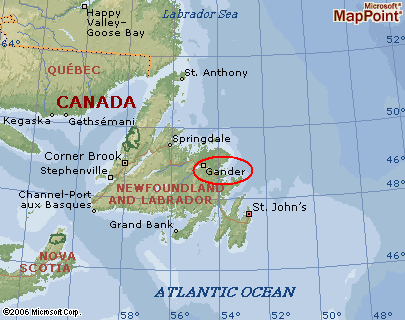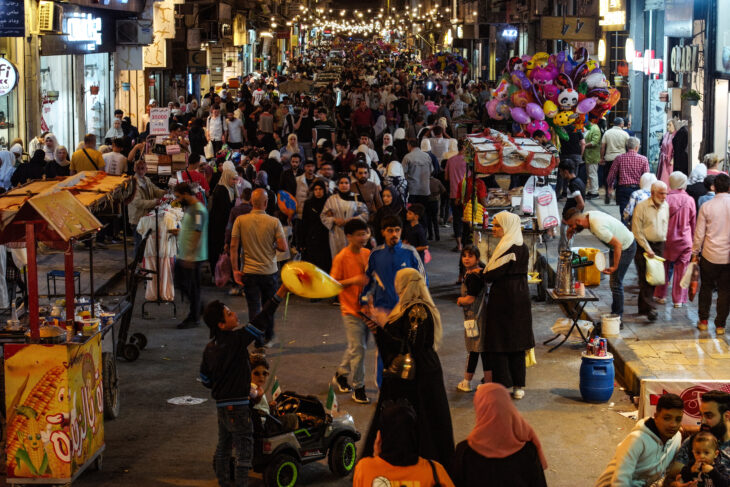
Such might be the musings of an average girl child or an adolescent female in Jamaica who is now aware of the epidemic of sexual assaults, including rape, which girl children and adolescent females have experienced in recent times. She might continue:
I have the audacity and the right to hope that if I am raped, somebody will listen, and not only listen, but believe me! I also have the right to hope that the system will give me the protection and support that I need to tell my story, and ensure my access to “due process” to which I am entitled. Is this unreasonable?
Her aspirations are guided by a belief or an understanding that the human rights obligations of the State include removing all barriers to her protection and support. From a human rights perspective, it is a well enshrined principle that “due process” should be equally accessible to both alleged perpetrators and survivors of sexual violence.
The State has a duty to respond to all forms of human rights abuse, e.g. torture, by providing mechanisms for support and protection, if the justice system is not enabling or not supportive of victims’ rights to due process. In current public discourse, there seems to be a disproportionate focus on the rights of the alleged perpetrator for protection against defamation of character, while the reasonable concerns and rights of child survivors are not adequately addressed. Are the aspirations of the girl child misplaced, hardly to be fulfilled, struggling to survive, and not just exist after being raped?
How does the system, of which the State is a part, respond to gender-based violence, to sexual violence against girl children and female adolescents? The system is used here to refer not only to the justice system itself, including the police force and the Victim Support Division of the Ministry of Justice, and State agencies with the responsibility for child care and protection. It also includes the family and community, and institutions such as schools, churches and police stations, those places where “first responders” are to be found.
Increasingly, calls for “breaking the silence” are directed at these spaces, where “first responders” live and work, and to whom an abused child would normally be encouraged to tell her story, to people in positions of trust and authority. The code of silence with which child survivors live is as pervasive as the sexual violence it covers up. It feeds the underreporting of rapes, and despite this, rates of reported rape in Jamaica are high, at 51 per thousand, in comparison to the global average of 15 reported rapes per thousand persons. (Robinson, February 2017) Who is to be held accountable for this situation?
There is no doubt that violent crimes, such as homicides and rapes, are pervasive. The Jamaica Constabulary Force (JCF) reports that boys are more likely to be murdered or robbed or shot, while girls are more likely to be sexually assaulted or raped, but there is little data on sexual violence against boys. Statistics for 2014 indicate that 44 children were murdered during that year, 138 were the victims of shootings and aggravated assault, and 447 girls were victims of rape. (Data from the Ministry of National Security’s Jamaica Crime Observatory (JCO), JCF in UNICEF Press Release https://www.unicef.org/jamaica/violence_34720.html)
This Jamaica Constabulary Force data also highlight that:
58% of victims fall in the 10-20 year age group, and they are most vulnerable when they are carrying out ordinary activities such as walking to and from school and church, or collecting water from a river or well in a deep rural area, or taking a taxi to and from the market. The most vulnerable (55%) were students.
Sexual grooming by suspects known to their victims who grow to feel safe with them, trusting persons in authority — whether an older uncle or step-father, or pastor or teacher — make them even more vulnerable. What are the chances that a girl child who has been sexually abused by any of the above persons will be believed, if and when she has the courage to tell her story? If the first time she tells her story, and she is not believed, can she reasonably expect the protection and support of the system, if and when the rape happens a second time?
If she is not believed again, she is being conditioned to believe that she does not have the right to protection and support, and maybe, just maybe, it is her fault. Worse, she gets beaten, and is often accused of lying, of seducing the man — at 11 or 13 or 15 years old!
Her hopes and expectations of protection and support dashed again? Could we blame her for losing faith in the system?
What else does the “audacity to hope that I will not be raped” suggest? A deep underlying fear and understanding by a girl child that she is just not safe, and that her right to live a life free from fear and sexual abuse is constantly under threat.
A culture of rape persists. It persists because ‘a nuh nutten, is only a likkle sex’ is one of the dominant, underlying beliefs and attitudes. Such attitudes are buttressed by a patriarchy in which the male leadership of the main institutions of socialization such as the home, the church, the school, the police force are treated as sacrosanct — unless the silence is broken.
A recent TV report drew attention to a mother who believed her daughter’s story, had the courage to take her to the doctor, had the courage to report the matter to the police, only to be villfied by members of the local church community because she (the mother) had the audacity to do what was right. She reported that her girl child had been sexually assaulted by a minister of religion. She broke the silence.
The larger question remains: What happens when the silence is not broken? And what of the “informer fi dead culture?” Do we, as a society, care that in Jamaica the clearance rate (when charges are laid) and therefore, the conviction rates for sexual offences are low? For 2016, for Jamaica, the average clearance rate for cases of rape and carnal abuse was 52%. (Robinson, February 2017)
It is true that low clearance and conviction rates exist not only for sexual offences, but it is particularly injurious for female child survivors, already traumatized, and more than likely living with long-term physical and emotional pain and damage.
A mother who was herself sexually assaulted as a child expresses her own internalized pain and anger through collusion with a male perpetrator, often in exchange for financial support for the family. Her lived experiences produce this story in her head: “Mi did get rape, and mi survive, so you wi manage, jus gwan!” Stories such as these are captured in research. In a survey of 750 girls aged 15-17 in Jamaica, Baumgartner et al (2009) reported that 49% had experienced some level of sexual violence or coercion, and 23% had been physically forced to have sex. The inter-generational transfer and acceptance of a culture of rape continues apace.
What can we reasonably expect of the State agencies with responsibility for the care and support of children, not only for their health and physical safety, but also protection of their rights in the case of sexual abuse? In summary, the Child Development Agency (CDA) provides support to children who are in need of care and protection, investigates reports of abuse against children and provides legal and policy advice to the Government on matters concerned with children.
The Office of the Children’s Registry (OCR) primarily receives reports of children who have, or who are likely to be abandoned, abused or otherwise in need of care and protection. The role of the Children’s Advocate is to enforce and protect the rights of children.
Described as a leader in Jamaica’s child protection system, CDA’s work is governed primarily by the Child Care and Protection Act, while it also collaborates with the OCR, Centre for the Investigation of Sexual Offences and Child Abuse (CISOCA), and the Victim Support Division of the Ministry of Justice in a Multi-Agency Partnership.
This is encouraging, but how does it actually work? What effect is this Multi-Agency Partnership having on the average rate at which charges are laid? Does the necessary policy coherence exist, leading to collaborative action which ensures that reported cases of child sexual abuse do not fall through the cracks? That the rights of child survivors to due process are protected? That child survivors of sexual abuse are not abandoned and villified by family, by community, by church and schools, in a society in which a culture of silence is dominant?
It is reported that the OCR is empowered to receive a mandatory report, is authorized to assess it and refer it to whichever government agency has the responsibility to take action, that is CDA and/or CISOCA. On average, how long does this take? It is established that the average rate at which charges are laid on a reported perpetrator was only 52% in 2016. And in the meantime, what of the child victims languishing in the other 48% of cases? Is adequate support, protection and care, including counselling provided in the interim for the victim and family, to ensure that she is able to tell her story and break the silence? Is protection provided against the “informer fi dead culture?”
Do these responsible State agencies have the capacity and resources to provide timely and effective services? A reasonable answer to this question is no. Gleaner April 7, 2017 reported that “with only 120 investigators, CDA was faced with approximately 14,000 reported cases of child abuse in 2015, leaving many of the investigators struggling to cope.”
Is there an appropriately trained female police officer in each police station, to be that most important “first responder” who ensures that this first interview is caring and sensitive, encourages the victim to speak her truth and neither vilifies nor re-traumatizes the girl child? Of the reported cases of sexual abuse of children in 2015, 8% were rape, 4% were incest, 11% were fondling, 52% for sex with a person under 16 years, and 2% for buggery. (Gleaner, April 7).
What of victims and families, isolated in deep rural areas? We can assume that many are lost among the unreported cases.
While it is not the responsibility only of the named government agencies to change the historical culture and tolerance of rape, they do have the responsibility to lead the charge on behalf of child survivors, by defending their right to tell their stories and break the silence, to be believed, and be protected in doing so, especially where a culture of rape exists.
They must send a clear message, for example, by taking prompt action under Section 6 of the Child Care and Protection Act against any person, regardless of social status, religious or political affiliation who is aware that sexual abuse of a child is taking place, but fails to report it promptly. Institutional failure on the part of any of these organizations, or of any individuals in these institutions, to take such action is not acceptable.
While acknowledging that each case and family situation might be different, as a society, we cannot accept that even one girl child is abandoned, and left alone to fight her way, as she attempts to survive the pain and trauma of rape. She cannot be left to become another statistic among the “unreported”. Bobby Ryan Jersey



